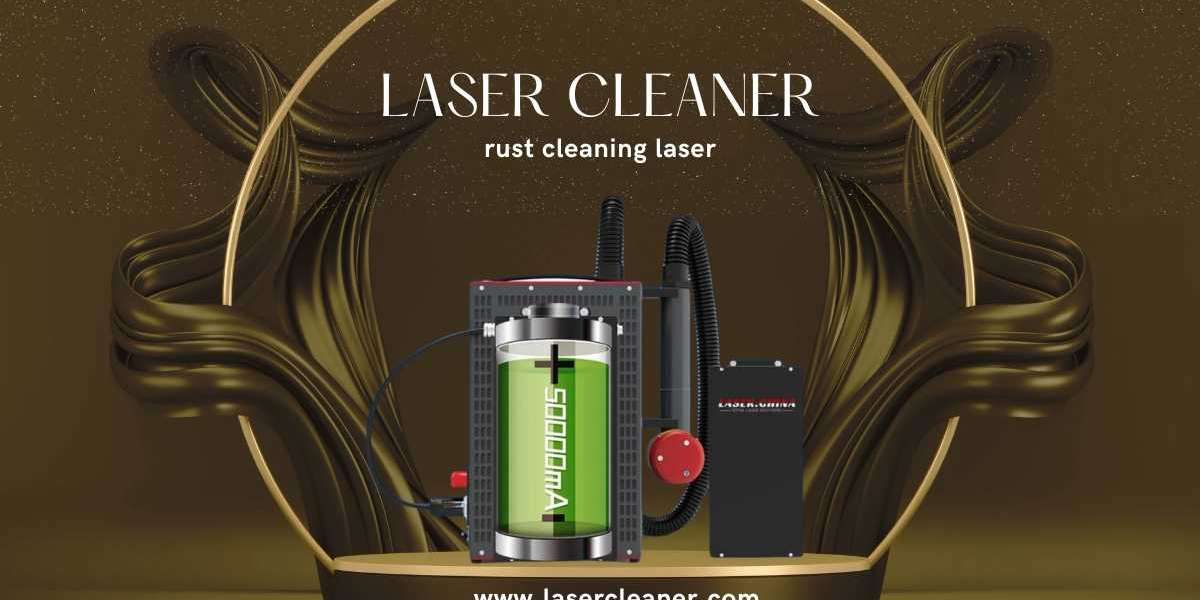Rust is a common problem faced in many industries, from manufacturing and automotive to construction and maintenance. Traditional methods of rust removal, such as sanding, chemical treatments, or abrasive blasting, can be time-consuming, environmentally harmful, and sometimes ineffective. Thankfully, modern technology has brought a game-changing solution: the rust cleaning laser.
What is a Rust Cleaning Laser?
A rust cleaning laser is an advanced tool that uses focused laser beams to remove rust and other contaminants from metal surfaces without damaging the underlying material. This non-contact cleaning method precisely targets the rust layer, vaporizing it cleanly and efficiently. Unlike traditional techniques, it doesn’t require harsh chemicals or abrasive materials, making it a safer and more environmentally friendly option.
How Does Rust Cleaning Laser Work?
The process involves directing high-intensity laser pulses onto the rusted surface. These pulses heat the rust layer so rapidly that it disintegrates or vaporizes without affecting the metal underneath. Because the laser can be finely controlled, operators can remove rust with great precision, even in hard-to-reach or delicate areas.
Benefits of Using Rust Cleaning Laser
Eco-Friendly and Safe: Since no chemicals or solvents are needed, rust cleaning lasers reduce environmental pollution and workplace hazards. There’s no residue or waste left behind, making cleanup easier.
Non-Damaging: The laser removes only the rust layer without harming the metal beneath. This preserves the integrity and lifespan of the equipment or structure being cleaned.
Highly Efficient: Laser cleaning is faster than traditional mechanical or chemical methods. It reduces downtime, allowing for quicker turnaround in maintenance and production.
Precision Cleaning: The laser can be adjusted to treat various rust thicknesses and surface types, making it versatile across industries.
Minimal Surface Preparation: Unlike sandblasting or chemical cleaning, laser cleaning requires little to no surface prep, saving time and labor costs.
Applications of Rust Cleaning Laser
Rust cleaning lasers are widely used across multiple sectors:
Automotive Restoration: Removing rust from car bodies, engine parts, and tools without causing damage.
Manufacturing: Preparing metal surfaces before painting or coating.
Infrastructure Maintenance: Cleaning bridges, pipelines, and industrial machinery.
Aerospace and Shipbuilding: Maintaining sensitive equipment and components where traditional abrasive methods might cause harm.
Why Choose Laser Cleaning Technology?
If you want a modern, effective, and eco-conscious way to deal with rust, laser cleaning is the future. For businesses and professionals looking to upgrade their maintenance processes, exploring solutions like the rust cleaning laser can lead to significant improvements in quality and productivity.
To discover more about this cutting-edge technology, visit reputable suppliers and check out comprehensive guides on rust cleaning laser systems. Many providers offer detailed information on how laser cleaning can be integrated into your existing operations.
Conclusion
Rust cleaning lasers represent a significant step forward in surface restoration and maintenance. By combining precision, efficiency, and environmental responsibility, they provide an unmatched solution for rust removal challenges. As industries continue to innovate, adopting laser cleaning technology will not only improve results but also promote sustainable practices.











